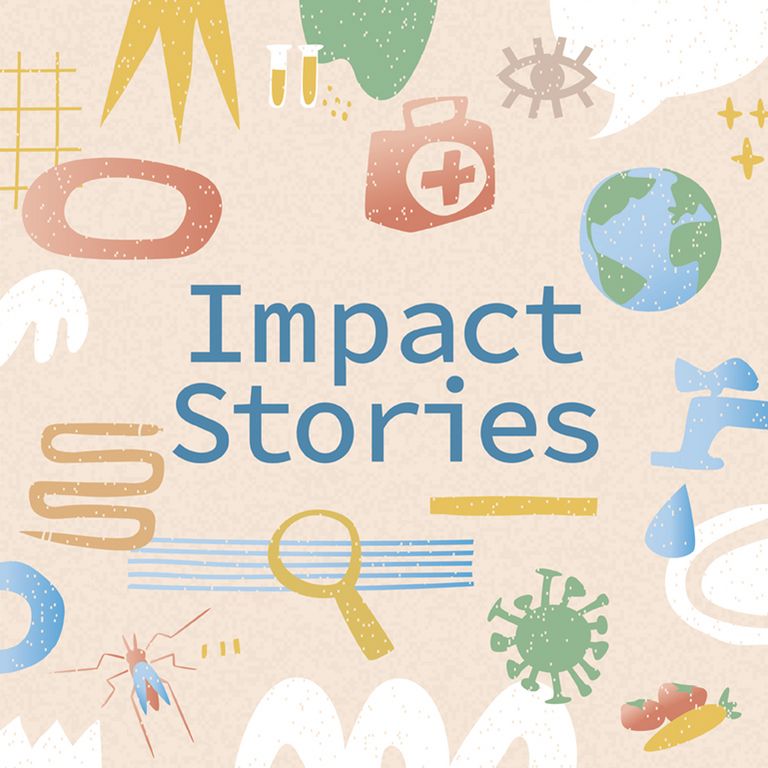


Even if you have never traveled to rural areas of sub-Saharan Africa, you have likely seen the images on TV: the bright orange soil and the beautiful clusters of straw-covered houses surrounded by gorgeous baobab trees and endless fields. But despite this beauty, the image of nature being in perfect harmony is an illusion as seasonal hunger remains a reality for many small-scale farmers, imploring the question: can we fix it?
If you travel to sub-Saharan Africa during the rainy season, vegetation seems so lush that you may start to wonder how long it would take until all of the thriving plants would absorb the settlements that the humans set up. If you visit the fields, you will find an amazing variety of plants - groundnuts, beans, potatoes of all varieties and much more.
If you travel to Eastern Zambia in particular, where I have been working, you will without a doubt also find lots of maize, which is used to prepare everyone's favorite nshima (a polenta-like dish). At first glance, things look great and life feels in many ways more natural and aligned with nature than the lives most of us are used to. However, the illusion quickly dissipates once you start talking to families living in these areas.
A race against time
In many part of Africa, crops can only be grown during a relatively short rainy season. In areas of Zambia, rains typically start in November and end in April, with harvest taking place between May and July. Some of the crops (especially cash crops such as cotton or tobacco) are sold for cash immediately after harvest. Most other crops are then kept in private or community storage places, and then slowly consumed until the next harvest arrives. As the months pass, food reserves tend to shrink rapidly.
By the time January arrives, many households have little food left, resulting in a period of scarcity between January and March, when the first new crops become available. This period is locally referred to as the "hungry season", and is considered the toughest part of the year. Tough not only because food and financial reserves are painfully scarce, but also because crops are growing fast during this period, and require a lot of weeding and fertilizing in order to achieve positive harvest outcomes.
To deal with the immediate financial and nutritional needs of their families, many farmers leave their homes during the hungry season to do short-term work for better-off farmers. Even though this makes perfect sense as a strategy to address severe hunger, short-term work for other farmers does not help farmers in the long-run because unattended fields will result in lower harvest yields, putting farmers in an even worse position for the following season.
"By the time January arrives, many households have little food left, resulting in a period of scarcity between January and March"

Breaking the cycle of poverty
To break this cycle of poverty, we conducted a series of studies in Chipata District, Zambia from 2011 to 2018. As part of these studies, we offered farming households access to maize or cash in January (at the beginning of the hungry season), which they had to repay after the annual harvest in July. We found that farmers were not only extremely happy about these additional seasonal reserves, but were also repaying their debts, with about 90% of loans recovered in the study. We also found that the additional reserves improved nutrition and helped farmers spend more time on their own fields, achieving better harvest outcomes.
So, all good then? Not quite
While everyone agrees that seasonal hunger is real, and that seasonal loans can help, it is not clear yet how such seasonal loan programs can be implemented in a sustainable way. For our studies, we had field research staff that could manage distribution and the collection of loans, and could provide infrastructure to support them. Any independent loan organization would have to recover these administrative and logistical costs through the loan program, which is difficult, given that average loan volumes are small (USD 30 per household in our study), and distances between villages and households are generally large, with poor roads and no public transport connecting them.
Recovering all these costs would likely require very high interest rates, which would not make much sense for the already poor households. From an historical and societal perspective, this of course also explains why there are currently no banks or formal lending agencies in these areas – the transactional volume of loan programs in these villages is just not enough to cover the cost required to run programs without external subsidies.

Does this then mean that seasonal loans can never happen at scale? Not necessarily
There are two main reasons why we believe seasonal loans may be possible in the long run. First, there is an increasing number of private sector firms that interact with small-scale farmers on a regular basis when it comes to selling items such as seeds and fertilizer. These firms could, in principle, offer seasonal loans as well, and would likely be willing to do so if the government was willing to subsidize such a program.
Second, the arrival of mobile banking platforms and the almost universal ownership of cell phones has made it much easier and substantially cheaper to reach rural populations. These new technologies can lower the cost of programs to a fraction of traditional in-person lending, and hopefully can help providing credit access to the most vulnerable populations during the hungry season in the future.
The author, Günther Fink, is an economist and Head of the Household Economics and Health System Research Unit at Swiss TPH. Together with the University of California Santa Barbara and the University of Zambia, he conducts research on the topic of seasonal hunger.